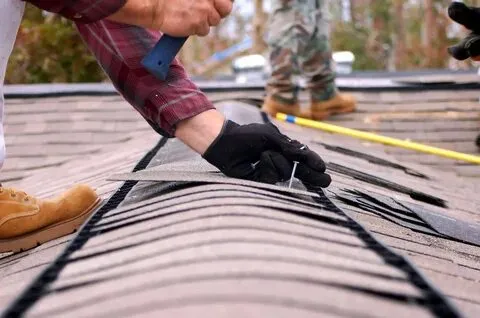When it comes to protecting your home from the elements, traditional roofing materials can sometimes fall short. That’s where rubber roofing comes in, offering a modern and effective solution for residential homes. In this article, we’ll explore the benefits of rubber roofing and why it’s becoming an increasingly popular choice for homeowners looking to upgrade their roof.
Advantages of Rubber Roofing for Residential Homes
Rubber roofing is a modern and innovative solution for residential homes that offers a range of advantages over traditional roofing materials. One of the main benefits of rubber roofing is its exceptional durability and longevity. Unlike other roofing materials that may crack, split, or deteriorate over time, rubber roofs are known for their ability to withstand harsh weather conditions, including heavy rain, snow, and high winds.
Another advantage of rubber roofing is its low maintenance requirements. Unlike materials like asphalt shingles that may need frequent repairs or replacements, rubber roofs are relatively easy to maintain and require minimal upkeep. Additionally, rubber roofing is highly resistant to mold, mildew, and algae growth, making it a clean and healthy option for residential homes.

Durability and Longevity of Rubber Roofing Materials
Rubber roofing has emerged as a modern solution for residential homes, providing a durable and long-lasting option for homeowners. One of the key benefits of rubber roofing materials is their superior durability, which can withstand harsh weather conditions and extreme temperatures without deteriorating.
<p>Additionally, rubber roofing materials have a longer lifespan compared to traditional roofing materials, making them a cost-effective choice for homeowners in the long run. The longevity of rubber roofing is attributed to its resistance to UV rays, moisture, and mold, which helps maintain its structural integrity over time. With proper maintenance, a rubber roof can last up to 50 years, providing peace of mind for homeowners.</p>

Energy Efficiency and Environmental Benefits of Rubber Roofing
Rubber roofing is a modern and innovative solution for residential homes that offers numerous benefits, including energy efficiency and environmental advantages. One of the key benefits of rubber roofing is its ability to provide superior insulation, helping to reduce energy costs by keeping homes cooler in the summer and warmer in the winter. This can lead to significant savings on heating and cooling bills over time.
Furthermore, rubber roofing is a sustainable choice for environmentally conscious homeowners. Made from recycled materials, rubber roofing is an eco-friendly option that helps reduce waste and minimize the impact on the environment. In addition, rubber roofing is highly durable and long-lasting, reducing the need for frequent replacements and further contributing to its sustainability. Overall, rubber roofing is a smart choice for homeowners looking to improve energy efficiency and reduce their environmental footprint.

Key Considerations for Installing Rubber Roofing on Residential Homes
One of the key considerations when installing rubber roofing on residential homes is to ensure proper surface preparation. This includes cleaning the roof surface thoroughly to remove any dirt, debris, or old roofing materials. Applying a primer is also essential to ensure proper adhesion of the rubber membrane to the roof substrate. Additionally, it is important to inspect the roof for any existing damage or issues that may need to be addressed before installing the new rubber roofing material.
Another important consideration is choosing the right type of rubber roofing for your residential home. There are different types of rubber membranes available, such as EPDM, TPO, and PVC, each with its own set of benefits and drawbacks. It is important to select a material that is suitable for your climate and roof design. Additionally, considering factors such as color options, durability, and warranty coverage can help you make an informed decision when selecting a rubber roofing material for your home.
In Conclusion
In conclusion, rubber roofing has emerged as a modern and innovative solution for residential homes, offering a durable, weather-resistant, and cost-effective alternative to traditional roofing materials. With its flexibility, long lifespan, and eco-friendly qualities, it is no wonder that more and more homeowners are making the switch to rubber roofing. Whether you are looking to replace your existing roof or embark on a new construction project, consider the benefits of rubber roofing for your home. Embrace the future of roofing with rubber and enjoy the peace of mind that comes with a reliable and long-lasting roof over your head.














